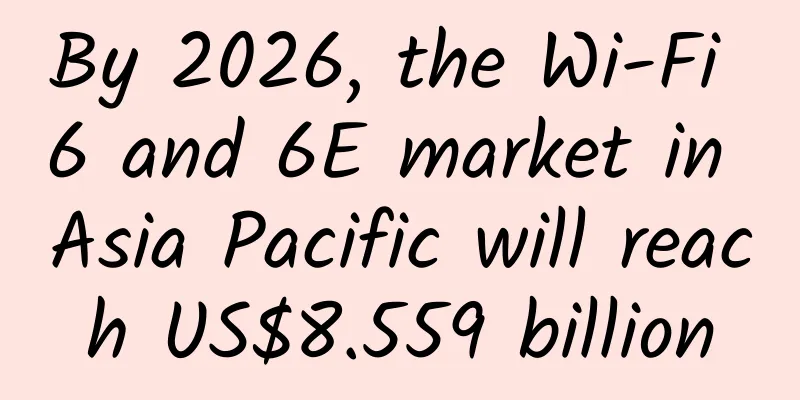How IPv6 will gradually replace IPv4

|
Have you noticed that many apps now have a line of small words "XXX supports IPv6 network" or "IPv6" below the start page, but some do not. What's going on? It turns out that these apps already support IPv6 services and are preparing to fully switch to IPv6 networks in the future. With the advent of the 5G era, there are more and more terminal devices, and IPv4 addresses have long been unable to meet the application scenarios that require a large number of IP addresses. IPv6 has the advantages of more addresses, smaller routing tables, and better security, which can completely solve the various problems faced by IPv4 networks in the 5G era. How to switch from IPv4 to IPv6? IPv6 has so many advantages, so can we switch all existing IPv4 networks to IPv6 networks at once?
The answer is no. IPv6 was proposed in 1992. After more than 20 years of development, it has become a very mature protocol system. However, IPv6 is not an improvement on IPv4, but a brand new protocol, which means it is not compatible with IPv4, and it is impossible to replace IPv4 in one step. Therefore, the most feasible way is to gradually transition from IPv4 to IPv6 in stages. Phase 1: In the early stage of transition from IPv4 to IPv6, the main body of the Internet is still IPv4, and most applications are also based on IPv4. IPv6 networks only constitute small and medium-sized networks locally. The networks at this stage are generally called "IPv6 islands and IPv4 oceans." Therefore, the first phase mainly solves the problem of enabling users in the IPv6 network to access the IPv4 network. Phase 2: When IPv6-based services are widely used on a large scale, we will enter the mid-term stage of coexistence of IPv4 and IPv6. At this stage, the IPv6 network has formed a scale and formed a complete IPv6 network structure from access, aggregation to backbone network. The second phase mainly solves the problem of user and resource mutual access between IPv4 and IPv6 networks. At present, after vigorous development, IPv6 in my country has entered the second stage. Phase 3: When most of the services and applications in the IPv4 network have been migrated to the IPv6 network, the transition from IPv4 to IPv6 has entered the late stage. This stage is opposite to the early stage, in which only a few parts of the IPv4 network are still retained, and the network situation is "IPv4 islands and IPv6 oceans". Therefore, the third phase mainly addresses the issue of enabling users in IPv4 networks to access resources in IPv6 networks. What should I pay attention to when switching from IPv4 to IPv6? Since IPv6 and IPv4 are two different networks, how users in the two networks interact and whether it will affect their actual lives are what users are most concerned about. So what should we pay attention to during the switching process? When the IPv6 protocol is deployed on an IPv4 device or the IPv4 protocol and services are disabled on a dual-stack device, users should not be able to perceive the change in the operator's basic network being upgraded to IPv4/IPv6 dual stack or from dual stack to IPv6-only. For example, when the operator's basic network is upgraded to IPv4/IPv6 dual stack, the user's terminal will be assigned two addresses, IPv4 and IPv6, instead of the original IPv4 address, and the customer terminal will give priority to using the IPv6 protocol to implement web pages, videos and other applications. Customers using the terminal do not perceive these changes, and users do not want to know the specific matters of the operator's basic network upgrade from IPv4 to IPv4/IPv6 dual stack. At any stage of the operator's network evolution, end users cannot be forced to upgrade from terminals or devices that only support IPv4 to terminals or devices that support IPv4/IPv6 dual stacks. Users can choose to upgrade or eliminate their own terminals or devices.
Technical support for switching from IPv4 to IPv6 In order to ensure the smooth evolution from IPv4 to IPv6, the Internet Engineering Task Force (IETF) established a special working group to conduct research and formed three types of technical solutions: dual stack technology, tunnel technology, and protocol conversion technology. 1. Dual stack technology IPv6 and IPv4 are network layer protocols with similar functions. Both are based on the same physical platform, and there is no difference between the transport layer protocols TCP and UDP loaded on them. IPv4/IPv6 dual stack technology refers to running both IPv4 and IPv6 protocols on network nodes at the same time, forming two logically independent networks in the IP network: IPv4 network and IPv6 network. Dual-stack nodes in the network support both IPv4 and IPv6 protocol stacks. They use the IPv4 protocol stack when communicating with IPv4 nodes and use the IPv6 protocol stack when communicating with IPv6 nodes. Dual stack technology is the basis for the transition from IPv4 to IPv6, and all other transition technologies are also based on it. When IPv6 is deployed using dual stack technology, there is no mutual impact between IPv4 and IPv6 network deployment, and deployment can be done on demand. Therefore, dual-stack technology is considered to be the simplest way to deploy IPv6 networks and is widely adopted by domestic and foreign operators. 2. Tunnel technology During the development of IPv6 networks, many local IPv6 networks have emerged. In order to connect these IPv6 islands through the IPv4 backbone network, tunnel technology is needed. Tunnel technology is a technology that embeds one IP protocol data packet in another IP protocol data packet for network transmission. There are many types of tunnels, which can be divided into IPv4 over IPv6 tunnels and IPv6 over IPv4 tunnels according to different application scenarios. 3. IPv6 over IPv4 tunnel IPv6 over IPv4 is a tunnel technology that transmits IPv6 data packets based on IPv4 tunnels. It encapsulates IPv6 packets in IPv4 packets so that IPv6 protocol packets can communicate across IPv4 networks. When IPv6 packets pass through an IPv4 network, they need to go through the "encapsulation-decapsulation" process: 1) The tunnel sender encapsulates the IPv6 message in an IPv4 packet, regards the IPv6 packet as the payload of IPv4, and transmits the encapsulated packet on the IPv4 network. 2) When the encapsulated packet reaches the receiving end of the tunnel, the IPv4 header of the encapsulated packet is removed and the IPv6 message is taken out for further processing. The nodes at both ends of the IPv6 over IPv4 tunnel must support the IPv4/IPv6 dual protocol stack. Except for the nodes at both ends of the tunnel, other nodes do not need to support the dual protocol stack. IPv6 over IPv4 tunnel technology can be used to connect local IPv6 networks through the existing Internet backbone network running the IPv4 protocol. Therefore, tunnel technology is the easiest technology to adopt in the early stage of transition from IPv4 to IPv6. Representative technologies include 6in4, 6RD, ISATAP, 6PE, 6vPE, etc. 4. IPv4 over IPv6 tunnel In contrast to IPv6 over IPv4 tunnel technology, IPv4 over IPv6 tunnel technology solves the problem of access devices with IPv4 protocol stack becoming isolated communication islands in the IPv6 network. The IPv4 over IPv6 tunnel encapsulates the IPv4 message. That is, the tunnel sender encapsulates the IPv4 message in an IPv6 packet and transmits the encapsulated packet on the IPv6 network. When the encapsulated packet reaches the tunnel receiver, the IPv6 header of the encapsulated packet is removed and the IPv4 message is taken out for further processing. In practical applications, DS-Lite is a typical IPv4 over IPv6 tunnel technology. DS-Lite technology is implemented by the collaboration of two modules: B4 (Base Bridging BroadBand Element, usually a user terminal) and AFTR (Address Family Transition Router). A DS-Lite tunnel is established between the B4 and AFTR devices, and NAT is configured on the AFTR device to enable IPv4 users to access the IPv4 network through the IPv6 network. At the same time, NAT technology realizes operator-level IPv4 address reuse, which can reduce IPv4 address overhead. 5. Protocol conversion technology During the transition period, when IPv4 and IPv6 coexist, a major problem faced is how IPv6 and IPv4 can communicate with each other due to their incompatibility. In order to solve this problem, IETF designed the NAT-PT (Network Address Translation-Protocol Translation) solution in the early days. NAT-PT achieves two-way access between IPv6 and IPv4 networks by converting the network addresses and protocols between IPv6 and IPv4, but it also shows various defects in actual network applications, so IETF recommends that it no longer be used. In order to solve various defects in NAT-PT and realize the network address and protocol conversion technology between IPv6 and IPv4, IETF redesigned a new solution: NAT64 and DNS64 technology.
Dual stack technology, tunnel technology, and protocol conversion technology cooperate and work together during the transition from IPv4 to IPv6, solving the coexistence and interoperability problems of IPv4 and IPv6 during the transition period and ensuring the smooth evolution from IPv4 to IPv6. Current Status of IPv6 Network Deployment With the above switching methods, switching principles and technical guarantees, and in line with the development trend of the Internet, the country is actively promoting the deployment of IPv6. In November 2017, the General Office of the CPC Central Committee and the General Office of the State Council issued the "Action Plan for Promoting the Large-Scale Deployment of Internet Protocol Version 6 (IPv6)", which clearly puts forward the overall goals, roadmap, timetable and key tasks for the development of the next generation Internet based on IPv6 in the next five to ten years. Since the release of the "Action Plan", the scale of IPv6 deployment in our country has shown an accelerated development trend, the number of users with allocated IPv6 addresses has increased rapidly, and the number of active IPv6 users has increased significantly. As of May 2019, the super-large, large and small IDCs of the three major basic telecommunications operators have all completed IPv6 transformation, and the recursive DNS of the three major basic telecommunications operators have all completed dual-stack transformation and support IPv6 domain name record resolution. The backbone network equipment has all supported IPv6, and the 13 backbone network direct connection points have all achieved IPv6 interconnection and fully opened IPv6 bearer services; China Telecom, China Mobile and China Unicom have completed the IPv6 transformation of the metropolitan area network in 30 provincial capitals across the country. The 44th "Statistical Report on the Development of China's Internet" of the China Internet Network Information Center (CNNIC) pointed out that as of June 2019, the number of IPv6 addresses in our country was 50,286 blocks/32, ranking first in the world; the number of active IPv6 users reached 130 million, accounting for approximately 15% of my country's Internet users. Therefore, it can be said that our country is fully supporting IPv6 from networks, applications to terminals.
Having said so much, I wonder if I have solved the doubts at the beginning? In the future, when you use your mobile phone, if you see the words "XXX supports IPv6 network" or "IPv6" on the APP start page, you should know what is going on. |
>>: Will 5G phones turn back to 4G? Possibly
Recommend
Home Wi-Fi Routers and Extenders Market to Reach $18 Billion by 2030
[[420910]] Market Introduction Market research fi...
Why does 5G require huge investment, but the final experience feels not much different from 4G?
Many people say that the reason why 5G is not ver...
AllHost: £9.5/quarter-1GB/30G NVMe/8TB@2Gbps/UK VPS
AllHost is a UK-based company (company number 134...
ZJI: Hong Kong Alibaba Cloud dedicated server monthly discount of 270-400 yuan, E5 server monthly payment starts at 480 yuan
ZJI was founded in 2011 as Weixiang Host, a well-...
5G network needs to save money by relying on these four key technologies
[[385335]] This article is reprinted from the WeC...
Let’s talk about 5G cloud dedicated line, do you understand?
[[424450]] A few days ago, I read an article abou...
11 reasons why YouTube supports 100 million video views per day with just 9 engineers
Author | NK Planning | Yan Zheng February 2005, C...
Managing a growing API portfolio
We have previously discussed the importance of AP...
Compared with the insecure HTTP, how does HTTPS ensure network communication security?
HTTP is an excellent communication protocol, but ...
Frost & Sullivan | Venustech Web Application Firewall ranks first in market share and leads the WAF market in Greater China
Recently, Frost & Sullivan, a global authorit...
Quality, innovation and excellence, Ruijie Networks releases new products for general education in smart classrooms
On April 20, Ruijie Networks held an online launc...
You have insufficient data remaining for this month...
[[439238]] You are immersed in watching TV series...
5G and edge computing, how to choose?
With emerging trends like 5G and edge computing, ...
In the 5G era, will you still look for WiFi everywhere?
Watching short video apps like Tik Tok and Kuaish...
Don't just look at the wireless router antenna. WiFi signal is only related to this parameter.
When buying a wireless router, should you buy one...









